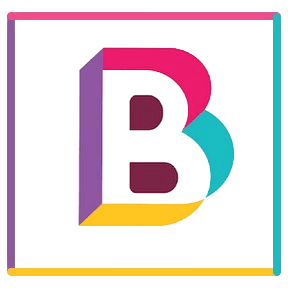We all have something valuable to share, right? If you’re a talented web designer, it’s time to open up your toolkit and share your expertise with a wider audience. Not only can sharing your knowledge help others, but it can also enhance your personal brand and establish you as an authority in the web design community.
### Why Share Your Web Design Expertise?
Web design is more than just aesthetics; it’s about functionality, user experience, and creating online spaces that serve real purposes. As digital landscapes evolve, the demand for skilled web designers is higher than ever. Sharing your expertise allows you to:
1. Connect with Others: Engaging in conversations with fellow designers and potential clients can deepen your connection with the community.
2. Build Your Personal Brand: Writing articles showcasing your skills can significantly elevate your professional image.
3. Stay Relevant: As you write and share knowledge, you stay updated with the latest trends, ensuring that your skills remain sharp and relevant.
By writing about web design, you can inspire others, encourage dialogue, and position yourself as a leader in your field. Let’s look at how you can effectively share your knowledge.
### Understanding Your Audience
Before you start crafting your masterpiece, understanding who you are writing for is essential.
#### Identify Your Target Readers
Your audience may include:
Knowing your audience helps in tailoring your content to meet their needs. Are they beginners seeking foundational knowledge or experienced designers looking for advanced techniques?
### The Art of Structuring Your Content
Having a well-structured article not only makes your writing more readable but also keeps your audience engaged. Here’s how you can break down your content.
#### Start with a Compelling Introduction
Your introduction should grab attention and give a brief overview of what to expect. Use a relatable anecdote or an intriguing statistic to pique interest.
#### Create Engaging Subheadings
Use H2 and H3 tags to craft subheadings that guide your readers through your post. For instance:
Best Practices in Web Design
In this section, provide detailed insights on the core principles of web design, focusing on elements like:
1. User-Centric Design: Highlight the importance of designing websites that prioritize user experience. Psychology plays a crucial role in how users navigate websites, so ensure your design considers their behavior.
2. Responsive Design: With over 50% of web traffic coming from mobile devices, responsive design is vital. Discuss how to create layouts that adjust seamlessly across devices.
3. Color Theory: Explain the significance of color in design and how different shades can evoke specific emotions in users.
#### Use Bullet Points for Clarity
When listing best practices or tools, bullet points enhance readability.
Essential Tools for Web Designers:
### Engage with Real-World Examples
Nothing solidifies your points quite like real-world examples. Use case studies or illustrate concepts with projects you have worked on. This not only showcases your expertise but also serves to inspire your readers.
For example:
Share a project where you improved a client’s conversion rates by revamping their website’s design. Discuss the steps taken, the challenges faced, and the solutions implemented.
#### Provide Data and Statistics
Incorporating data lends authority to your writing. For instance, you could mention that websites designed with a user-centric approach saw a 50% increase in customer satisfaction, according to a survey conducted by User Experience Magazine. This kind of information not only informs but also convinces readers of the importance of good web design.
### SEO Optimization: Making Your Content Discoverable
If you’re going to put in the effort to share your knowledge, you want people to find it! Optimizing for search engines increases your visibility, leading to a wider readership.
#### Keywords Should Flow Naturally
Use keywords like “web design tips”, “responsive design”, and “user experience” within the content. However, avoid keyword stuffing which can dilute your message and make your writing feel forced. Aim for a keyword density of about 1-2% for the best results.
#### Optimize Meta Descriptions and Titles
While writing your blog, pay attention to titles and meta descriptions as these are crucial for attracting readers. A meta description for this article could be:
“Explore expert web design tips and techniques that can enhance your skills and help you connect with the broader digital community.”
### Foster Engagement: Encouraging Comments and Discussions
Once your article is published, encourage readers to engage with you. Ask open-ended questions at the end of your post, such as:
What web design challenges have you faced?
This not only invites dialogue but can also lead to networking opportunities. Respond to comments and create a sense of community around your posts.
### Consistency is Key
To keep your audience returning, aim to share new content regularly. Whether it’s weekly, biweekly, or monthly, find a rhythm that works for you. Also, consider diversifying your formats—use videos, podcasts, or infographics alongside written articles for a richer experience.
### Leveraging Social Media
Promote your articles on social media platforms where your audience hangs out. Use eye-catching graphics and snippets from your articles to spark interest.
Don’t just share your posts, but actively participate in discussions related to your content area. This establishes your credibility and drives traffic back to your site.
#### Networking with Other Professionals
Connect with other web designers or bloggers who share your enthusiasm. Collaborating can lead to guest blogging opportunities or feature exchanges that help grow your audience and diversify your content.
### Summary Takeaways
Sharing your web design expertise is not just about showcasing your skills—it’s about creating a community, building your brand, and staying current in a fast-evolving industry.
Key points to keep in mind:
Feel excited about sharing? You definitely should be! There’s a world out there ready to receive your insights, and each article is a step toward establishing yourself as a leader in the web design community. So go ahead, start writing, and let’s inspire the next generation of web designers together!

